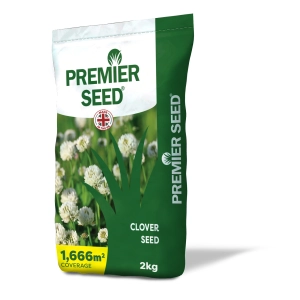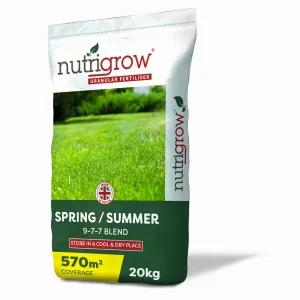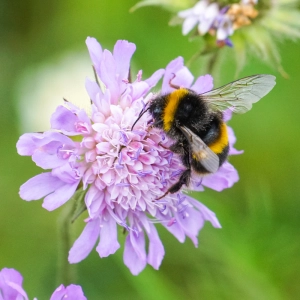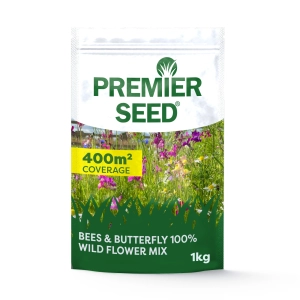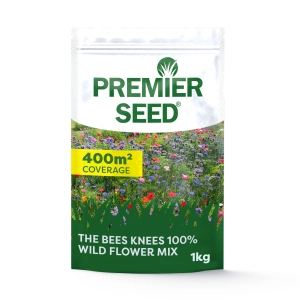There are around 300 species of flowering clover, also known as trefoils (translating as ‘three leaves’). However, the most common in the UK are white and red clover.
Clover is a nitrogen fixer which means it delivers beneficial nitrogen to the soil using symbiotic bacteria in its root nodules. For this reason, clover was historically an important part of the rural landscape and was an important crop - traded right round the world.
However, its popularity as a crop declined with the introduction of guano imports and the production of industrial ammonia in the early 20th century. But in recent years clover has had a resurgence with interest in forage mixes that include clover.
As well as forage, clover lawns are rapidly growing in popularity in UK gardens - both aesthetically as a greener alternative to grass, and functionally to fight the decline in pollinators. Social media trends, and the general zeitgeist driven by climate change are helping to underpin the trend for clover lawns.
Benefits of clover
Clover is relatively drought-resistant, meaning a clover lawn is likely to remain greener through very dry periods – where a grass lawn will turn yellow in periods of drought if untreated. It will grow well on a range of different soils, though can be shorter-lived on acidic soils.
Clover does not require fertiliser to grow well, but the addition of fertiliser is said to improve your chances of achieving four leaves clovers!
Clover will tolerate mowing – simply shooting up again and again after repeated cuts and producing a lush abundant crop. Clover also acts as a cover crop and will help choke out other weeds that may invade traditional grass lawns.
Finally, clover is loved by our native bumble bees and honeybees both of which will pollinate clover successfully. Clover is one of the main nectar sources for honeybees.
How to grow a clover lawn
If you want to grow a new lawn that is 100% clover, you will need to sow the clover seed onto bare prepared soil, much as you would when sowing wildflower seed.
Dig the soil to around 20cms deep, levelling with a rake. You may want to leave the soil alone for a few weeks to see if any weed seeds germinate in this time. You can then remove them before sowing your clover seed.
Sow clover seed in spring for best results at a rate of 1.2-1.5g per m2. You can sow the seed by hand or use a hand-held spreader.
Gently rake the seeds into the soil and press down manually or use a roller. Water your new clover seed bed for the next six weeks or until established, taking care not to over water and wash any seed away.
If you want a mixed grass and clover lawn, scarify or rake your lawn to open it up and expose some of the soil. Water your grass and then disperse the clover seed evenly over your lawn.
Roll or firm the seed into the ground as best you can and then keep it watered for the next six weeks or until you see it start to establish in the grass.
Avoid mowing the lawn until you see the clover has fully established or keep your mower on the highest setting so that it only takes the top third off your grass. Keep your clover and grass mixed lawn at a height of around 8-10cm for best results throughout the summer.
White clover will normally flower in summer from June to September. The entire plant is very tolerant to footfall and trampling making it ideal for heavy use.




